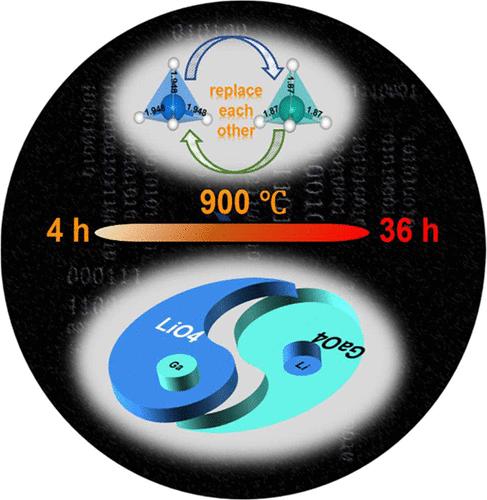Degree of Crystal Structure Distortion-Induced Tunable LiGaO2 Long Persistent Luminescence for Optical Information Encryption
IF 8.2
2区 材料科学
Q1 MATERIALS SCIENCE, MULTIDISCIPLINARY
引用次数: 0
Abstract
Tunable long persistent luminescence (LPL) phosphor materials have great potential for optoelectronic cryptographic applications. However, the mainstream techniques of modulating LPL generally have the characteristics of complex preparation processes, demanding crystal field environments, or expensive dopant ions, which restrict large-scale commercial application. Herein, we develop a simple, high-efficiency, and low-cost strategy to optimize the LPL of LiGaO2(LGO):Cu2+ by changing the sintering time to regulate the degree of crystal structure distortion. The Cu2+ as charge compensation will substantially enhance the emission intensity of LGO by a factor of 11.02 originating from the appropriate ionic size and coordination mode. Besides, the LPL time of LGO:Cu2+ can be extended effectively to 2 h by adjusting the sintering temperature and time (900 °C@24 h). The extension mechanism is that Li and Ga can be substituted for each other more easily and induce crystal structure distortion due to the special crystal structure of LGO, resulting in an optimal trap concentration in LGO:Cu2+. Thus, our findings provide a simple way to modulate long persistent luminescence and further consider their potential impact on optical information encryption.

用于光学信息加密的晶体结构畸变程度诱导的可调谐 LiGaO2 长持续发光
可调谐长持续发光(LPL)荧光粉材料在光电密码应用方面具有巨大潜力。然而,调制 LPL 的主流技术普遍存在制备工艺复杂、晶场环境要求高或掺杂离子昂贵等特点,限制了大规模商业应用。在此,我们开发了一种简单、高效、低成本的策略,通过改变烧结时间来调节晶体结构的畸变程度,从而优化 LiGaO2(LGO):Cu2+ 的 LPL。Cu2+ 作为电荷补偿,将使 LGO 的发射强度大幅提高 11.02 倍,这源于合适的离子尺寸和配位模式。此外,通过调整烧结温度和时间(900 ℃@24 h),LGO:Cu2+的LPL时间可有效延长至2 h。其延长机制是由于 LGO 特殊的晶体结构,Li 和 Ga 更容易相互替代,并诱发晶体结构畸变,从而使 LGO:Cu2+ 中的阱浓度达到最佳。因此,我们的发现为调制长持续发光提供了一种简单的方法,并可进一步考虑其对光学信息加密的潜在影响。
本文章由计算机程序翻译,如有差异,请以英文原文为准。
求助全文
约1分钟内获得全文
求助全文
来源期刊

ACS Applied Materials & Interfaces
工程技术-材料科学:综合
CiteScore
16.00
自引率
6.30%
发文量
4978
审稿时长
1.8 months
期刊介绍:
ACS Applied Materials & Interfaces is a leading interdisciplinary journal that brings together chemists, engineers, physicists, and biologists to explore the development and utilization of newly-discovered materials and interfacial processes for specific applications. Our journal has experienced remarkable growth since its establishment in 2009, both in terms of the number of articles published and the impact of the research showcased. We are proud to foster a truly global community, with the majority of published articles originating from outside the United States, reflecting the rapid growth of applied research worldwide.
 求助内容:
求助内容: 应助结果提醒方式:
应助结果提醒方式:


